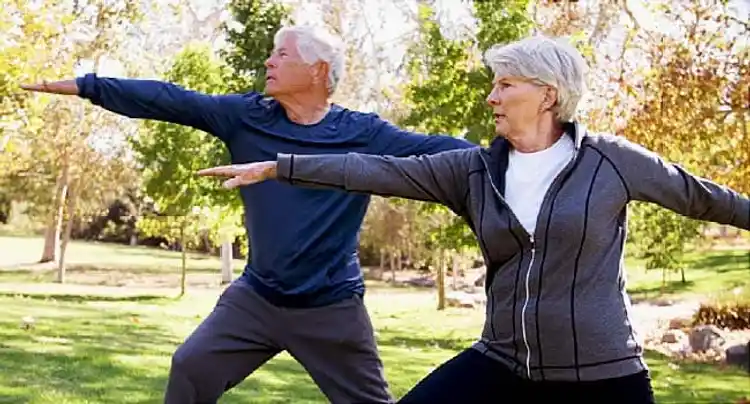Exercise and Your Blood Sugar

Hide Video Transcript
Video Transcript
[MUSIC PLAYING]
Third, it can help with blood pressure. Blood pressure is important to controlling diabetes. That helps to prevent the complications. And energy spent during exercise often leads to better blood pressures.
And finally, mood improves. Many patients feel better after they exercise. They feel stronger. And they feel positive about the experience of having made the time and made the effort to follow through.
So the American Diabetes Association has a 15/15 rule. They suggest that if you check your blood sugar 15 minutes or less before your exercise and it's below 100, you eat 15 grams of carbohydrates. That could be four glucose tablets. That could be 4 ounces of juice. Or that could be the equivalent of a small orange.
Then recheck the blood sugar every 15 minutes. And if it's still below 100 and you want to continue exercising, eat another 15 grams of glucose to allow you to continue to safely exercise.
Most people who have negative connotations about exercise associate exercise with lifting weights, or walking on a treadmill, or doing something that they consider uninteresting ad boring. I encourage them to think much more broadly about exercise. Include hobbies, dancing, yoga, things that they might not even consider to be important forms of exercise but will help them burn calories. And most importantly, keep moving. If you have a chance to get up and walk, do it. If you have a chance to park farther from the front door, do it.
The best kind of exercise is something that people will enjoy and keep doing. Find something that you can feel good about doing tomorrow, and the next day, and the day after.
DAVID ROBERTSON
Exercise is important for diabetes. First and foremost, it helps to burn calories, helps to control the blood-sugar level, which is an important goal in diabetes. Secondly, weight can be a challenge for people with diabetes, as it is for everyone. And it helps to manage weight, helps to make sure that weight is stable or improves if it needs to. Third, it can help with blood pressure. Blood pressure is important to controlling diabetes. That helps to prevent the complications. And energy spent during exercise often leads to better blood pressures.
And finally, mood improves. Many patients feel better after they exercise. They feel stronger. And they feel positive about the experience of having made the time and made the effort to follow through.
So the American Diabetes Association has a 15/15 rule. They suggest that if you check your blood sugar 15 minutes or less before your exercise and it's below 100, you eat 15 grams of carbohydrates. That could be four glucose tablets. That could be 4 ounces of juice. Or that could be the equivalent of a small orange.
Then recheck the blood sugar every 15 minutes. And if it's still below 100 and you want to continue exercising, eat another 15 grams of glucose to allow you to continue to safely exercise.
Most people who have negative connotations about exercise associate exercise with lifting weights, or walking on a treadmill, or doing something that they consider uninteresting ad boring. I encourage them to think much more broadly about exercise. Include hobbies, dancing, yoga, things that they might not even consider to be important forms of exercise but will help them burn calories. And most importantly, keep moving. If you have a chance to get up and walk, do it. If you have a chance to park farther from the front door, do it.
The best kind of exercise is something that people will enjoy and keep doing. Find something that you can feel good about doing tomorrow, and the next day, and the day after.
